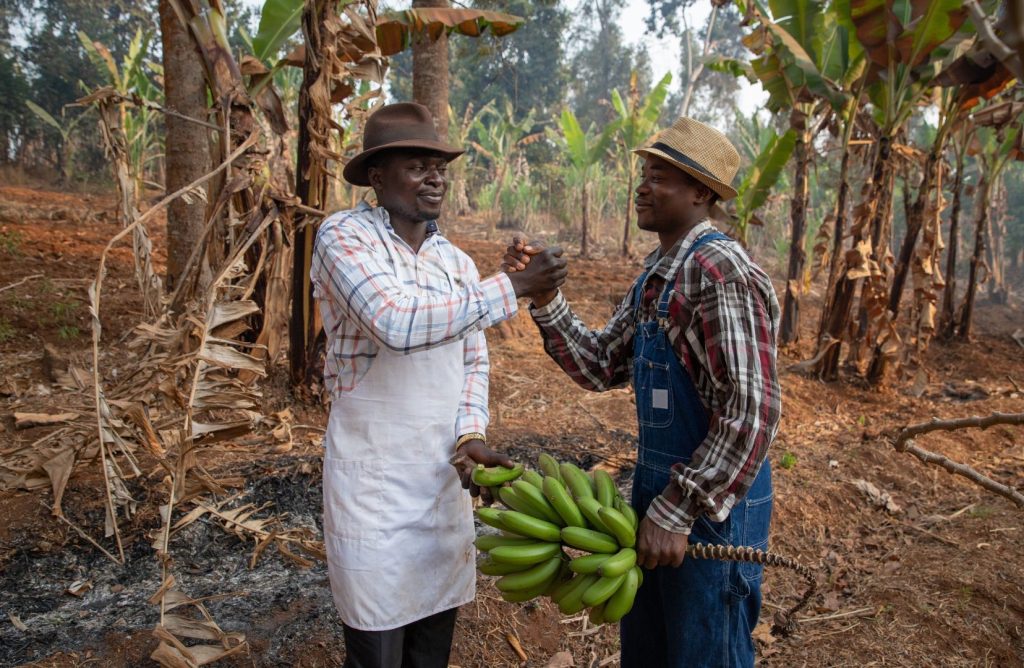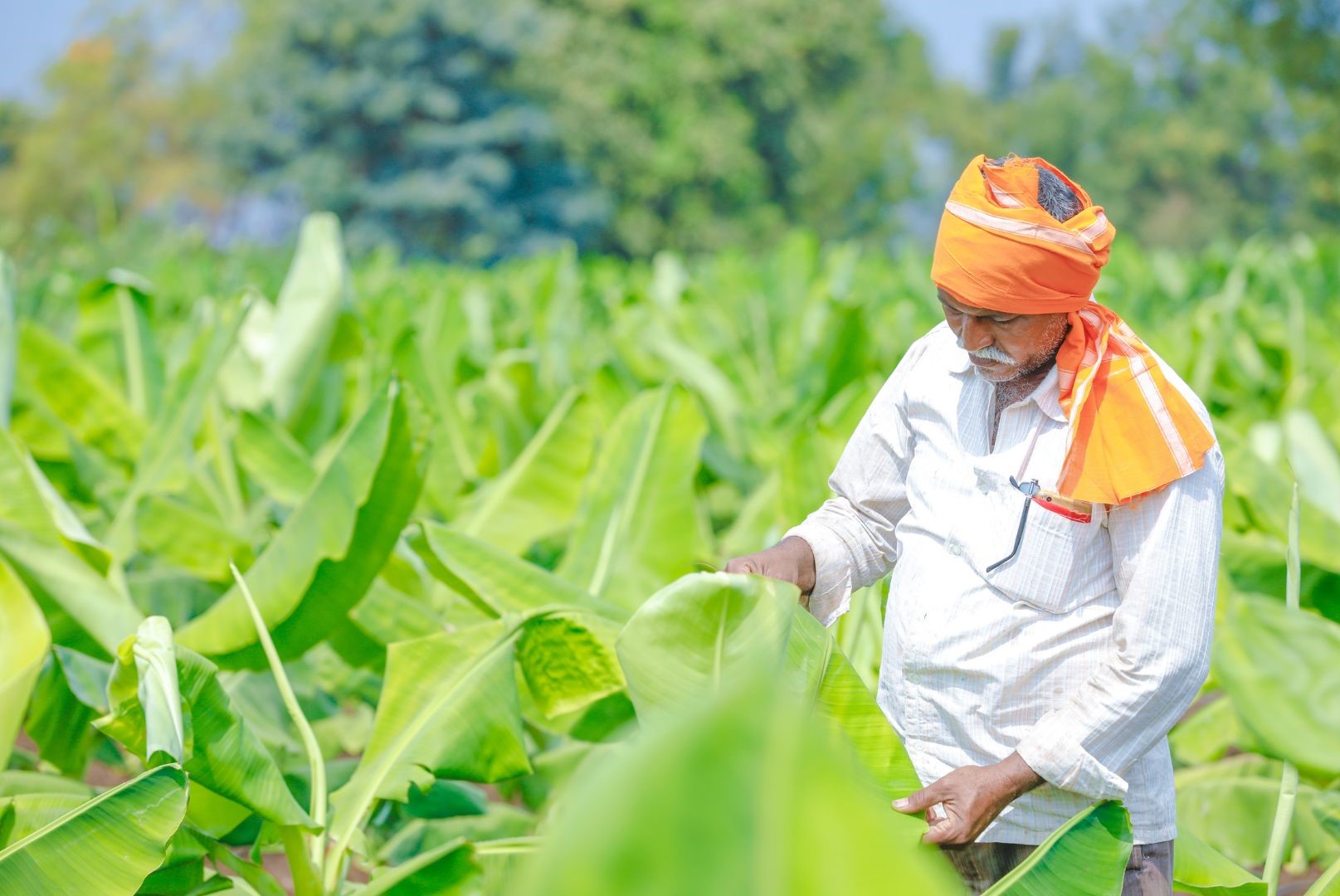Farmer Producer Organizations: A Way to Increase Smallholder Farmers’ Income
The challenges smallholder farmers face today
Agriculture is the backbone of the Indian economy and provides livelihood to more than 93.09 million households and between 90 to 150 million farmers. A typical Indian farmer often spends most of his time planning the logistics for selling his/her crop at the nearest market and finding suitable buyers who can provide a fair price. These farmers lack any financial means to invest in the storage, preservation, or processing of their produce to delay the sale of the crop/product until market prices are higher. That is the case for 86.1% of all farmers in India who are considered small and marginal farmers holding less than 2 hectares of land.
Lack of access to fair markets, the increased cost of inputs and logistics, and inadequate value-addition initiatives are the primary reasons for diminishing farmer incomes already battling the consequences of climate change and disease outbreaks, limiting their ability to participate in new market opportunities. This reality is relevant to millions of small farmholders across the globe who are looking for solutions to tackle these challenges.
One promising solution to tackle these challenges is the formation of ‘Farmer Producer Organizations’ (FPO).
What are the “Farmer Producer Organizations (FPO)”? – The importance of farmers’ cooperatives
The concept of FPOs was first developed in India in the early 2000s. FPOs can be registered companies (farmer producer companies or FPC) or cooperatives. These farmers-led organizations serve as a collective platform, enabling smallholders to aggregate their resources, improve their bargaining power, explore value addition, and access better markets, inputs, credit, and other services.
FPOs are formed by a collective of primary producers, such as farmers, livestock managers, fishers, artisans, and other small rural producers. They are typically registered as companies or cooperatives under relevant laws, allowing them to operate as legal entities. This hybrid structure combines the advantages of cooperative societies and private limited companies, ensuring that member-farmers’ interests are always protected and prioritized. They bring together small and marginal producers, allowing them to market their produce collectively, achieve economies of scale, and reduce production costs through bulk purchasing. FPOs allow for value-additional activities like grading, processing, and packaging, enabling farmers to receive higher market prices and even the opportunity to sell directly to consumers. They also assist farmers in accessing credit, participating in government schemes, and establishing direct retailer linkages, potentially eliminating all intermediaries. This collective approach has been proven to increase small farmers’ bargaining power significantly. FPOs are owned and controlled by the producers themselves, with each member having an equal say in decision-making processes. This democratic governance structure fosters a sense of ownership and accountability among the members, prioritizing their interests.
What are the functions and advantages of an FPO?
- Market Linkages: FPOs enable collective marketing, establish direct buyer links, and ensure farmers get a fair share of prices – studies have shown up to 15-20% higher prices than non-members.
- Input Management: Bulk input purchasing through FPOs helps reduce production costs for farmers by up to 25%.
- Value Addition: Value addition activities like processing and packaging by FPOs provide higher income for farmers than selling raw produce.
- Financial Services: FPOs give farmers better access to credit and institutional finance.
- Technology Transfer: FPOs assist in the faster adoption of modern agricultural technologies and practices among farmers.
- Capacity Building: FPOs provide training to upskill members and directors to build a better business plan and improve the quality of other activities.
- Bargaining Power: Collective strength increases negotiating power, which allows for securing higher prices on average.
- Sustainability: FPOs promote sustainable, climate-resilient agricultural practices by providing an overall ecosystem of scientific advisory, climate communication, and better access to markets, which makes it easier to mitigate the risks of climate change.
The Role and Structure of FPOs – How can FOPs be created?
Since FPO is an umbrella term and can refer to a company, cooperative society, or a mutually aided cooperative society, they can perform diverse functions depending on the members, area, production, and market opportunities. Some FPOs might only engage in producing inputs on a bulk scale to bring down the cost of production for their members. In contrast, others can engage in value-addition initiatives to make products to be sold in urban consumer markets and build a brand out of it. The most common operation model followed by FPOs is aggregating the produce for grading, sorting, processing (if any), and marketing commodities such as grains, vegetables, or milk in bulk to traders, retailers, and consumers directly to earn better margins.
The typical organizational structure of an FPO involves farmer members contributing the initial shared-up capital to form the entity. They require at least 10 shareholder members and registration costs between INR 20,000-40,000 to be established. The majority of FPOs have an average of 200–250 shareholders, with the composition varying significantly—from large-scale farmers to small and marginal farmers as shareholders. The capital provided by the shareholders can be used as working capital to procure the produce of member farmers or to purchase equipment for storage, processing, and other resources.

Any FPO’s key performance indicators (KPIs) are its productivity, membership contribution, and effective margins.
FPOs follow a democratic structure with a General Body comprising all farmer members, who elect a Board of Directors responsible for management and policy decisions. The Board appoints a CEO to oversee operations with support from functional departments and staff. Member farmers who provide capital have an ownership stake with voting rights. The structure often includes member clusters or village-level associations for better coordination. Key stakeholders are promoting organizations like NGOs, government agencies in India like NABARD, NCDC, SFAC, and other resource institutions, funders, and investors. This registration enables access to government schemes and benefits, such as grants for further investing in infrastructure, machinery, collection points, and transport vehicles.

FPOs are an upgraded business-oriented and self-sustained version of farmers’ cooperatives.
The concept of aggregation and promotion has always existed in cooperatives. However, most of these entities failed to become self-sufficient due to poor governance, lack of funds, membership issues, and political interference. This led to increased dependency on government grants, hand-holding institutions, and funding agencies, whose support could cease anytime. The creation of FPOs has enabled the cooperative model to exist with self-sufficiency and business planning in mind. This has empowered thousands of farmers to leverage their production capabilities together and grow their FPOs sustainably. Collectivization benefits farmers because their incomes and landholding sizes remain low, and FPOs solve this problem. Lack of capital can block a farmer’s access to the market, but transportation and selling costs are minimized when capital is pooled.
Moreover, resources such as seeds, fertilizers, pesticides, and farm equipment may be too costly for individual farmers, but collectivizing enables them to buy these in bulk at wholesale rates. FPOs also help add value to the product, which can minimize the losses incurred by farmers after harvest. Farmers gain more bargaining power as a collective against intermediaries and corporate entities. Inconsistent pricing by intermediaries can result in fluctuating market prices, but FPOs can ensure greater transparency and fairness in product pricing. All members of a farmer-producer organization are stakeholders and get a say, which gives decision-making power to women farmers if they are enrolled as members of the FPC.
FPOs can also be an effective model in the fight against climate change. Harsh environmental conditions, combined with soil degradation, lack of water, and loss of agrobiodiversity, make farming unprofitable. There is a significant gap in climate communication in rural areas. FPOs can act as tools to quickly communicate climate mitigation strategies and packages of practices, provide necessary inputs, and dispatch large-scale advisories in the era of constantly changing climate.
In conclusion, Farmer Producer Organizations have the potential to solve various challenges faced by small and marginal farmers in India and across the world. However, they have their fair share of problems, such as member loyalty, policy inconsistency, and poor governance, which often lead to mismanagement of the FPO. This allows young people to explore FPOs and build unique solutions to make the process more profitable and scalable. Millions of farmers require an FPO’s support and organization while not losing their self-sufficiency.
You can learn more about successful FPO case studies in this document:
https://www.nabard.org/auth/writereaddata/tender/0306220035case-studies-of-fpos-in-india-2019-21.pdf
References:
- Assessing India’s FPO Ecosystem. (n.d.). TCI. Retrieved May 1, 2024, from https://tci.cornell.edu/?blog=assessing-indias-fpo-ecosystem
- Farmer Connect Portal. (n.d.). Retrieved May 1, 2024, from https://farmerconnect.apeda.gov.in/Home/ForGroups?PaccessID=1
- Govil, R., Neti, A., & Rao, M. R. (n.d.). Farmer Producer Companies.
- Here is how producer organisations evolved in India. (n.d.-a). Retrieved May 1, 2024, from https://www.downtoearth.org.in/news/agriculture/here-is-how-producer-organisations-evolved-in-india-88866
- Here is how producer organisations evolved in India. (n.d.-b). Retrieved May 1, 2024, from https://www.downtoearth.org.in/news/agriculture/here-is-how-producer-organisations-evolved-in-india-88866
- IDR Explains | Farmer producer organisations (FPOs). (n.d.). India Development Review. Retrieved May 1, 2024, from https://idronline.org/features/idr-explains/idr-explains-farmer-producer-organisations-fpos/
- SOCIO ECONOMIC IMPACT OF FARMER PRODUCER ORGANISATIONS (FPOs) IN BASTAR DISTRICT OF CHHATTISGARH | Semantic Scholar. (n.d.). Retrieved May 1, 2024, from https://www.semanticscholar.org/paper/SOCIO-ECONOMIC-IMPACT-OF-FARMER-PRODUCER-(FPOs)-IN-Dewangan/9c078b03024c8e55a29621863d5bed0d4c42277e
Further reading
Farmers Cooperatives: Strengthening Small Farmers Through Collective Action
Agroecological guidelines for storage of cereal grains for smallholder farmers
Strategies for Small-Scale Farmers in Tropical Africa to Adapt to Climate Change
Cacao production: Challenges and Management Strategies
Unraveling the Impact of Contract Farming in Nigeria’s Agricultural Ecosystem
Cocoa Farmers’ Livelihood Challenges in West African
Empowering Oil Palm Farmers: Sustainable Solutions for Yield, Profitability, and Food Security










































































